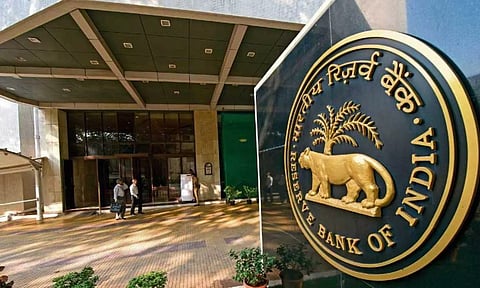

MUMBAI: The RBI on Thursday announced an increase of 25 percentage points in the risk weightage of consumer credit exposure of commercial banks and NBFCs from 100 to 125 per cent.
"The RBI has decided to increase the risk weights in respect of consumer credit exposure of commercial banks (outstanding as well as new), including personal loans by 25 percentage points to 125 per cent," according to the circular issued by the central bank.
However, the increase excludes housing loans, education loans, vehicle loans and loans secured by gold and gold jewellery.
Until now consumer credit had attracted a risk weight of 100 per cent.
In the case of NBFCs' loan exposures also it has also been decided that the consumer credit exposure of NBFCs (outstanding as well as new) categorised as retail loans, excluding housing loans, educational loans, vehicle loans, loans against gold jewellery and microfinance/SHG loans, shall attract a risk weight of 125 per cent up from 100 per cent earlier, the circular states.
As per extant instructions, credit card receivables of scheduled commercial banks (SCBs) attract a risk weight of 125 per cent while that of NBFCs attract a risk weight of 100 per cent.
On a review, it has been decided to increase the risk weights on such exposures by 25 percentage points to 150 per cent and 125 per cent for SCBs and NBFCs, respectively.
In terms of extant norms, exposures of SCBs to NBFCs, excluding core investment companies, are risk weighted as per the ratings assigned by accredited external credit assessment institutions (ECAI).
On a review, it has been decided to increase the risk weights on such exposures of SCBs by 25 percentage points (over and above the risk weight associated with the given external rating) in all cases where the extant risk weight as per external rating of NBFCs is below 100 per cent.
For this purpose, loans to HFCs, and loans to NBFCs which are eligible for classification as priority sector in terms of the extant instructions shall be excluded.
Strengthening credit standards
The RBI also said that banks and NBFCs shall review their extant sectoral exposure limits for consumer credit and put in place, if not already there, Board approved limits in respect of various sub-segments under consumer credit as may be considered necessary by the Boards as part of prudent risk management.
In particular, limits shall be prescribed for all unsecured consumer credit exposures.
The limits so fixed shall be strictly adhered to and monitored on an ongoing basis by the Risk Management Committee.
All top-up loans extended by regulated entities against movable assets which are inherently depreciating in nature, such as vehicles, shall be treated as unsecured loans for credit appraisal, prudential limits and exposure purposes.
The development comes after the RBI Governor had on October 6 this year, flagged the high growth in certain components of consumer credit and advising banks and non-banking financial companies (NBFCs) to strengthen their internal surveillance mechanisms, address the build-up of risks, if any, and institute suitable safeguards, in their own interest.
The high growth seen in consumer credit and increasing dependency of NBFCs on bank borrowings were also highlighted by the RBI Governor in the interactions with MD/CEOs of major banks and large NBFCs in July and August 2023, respectively.